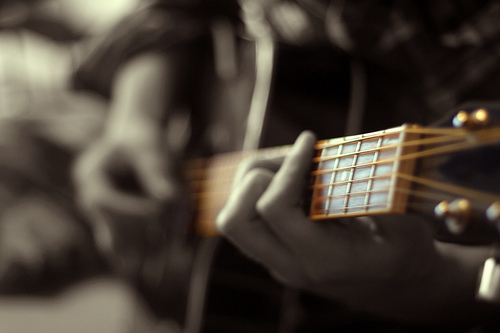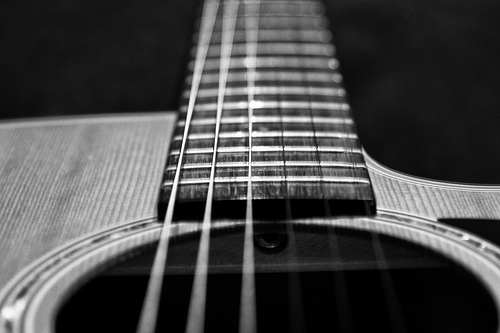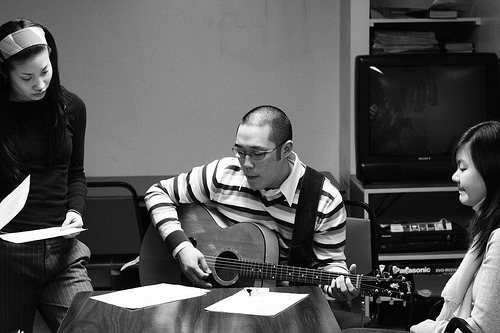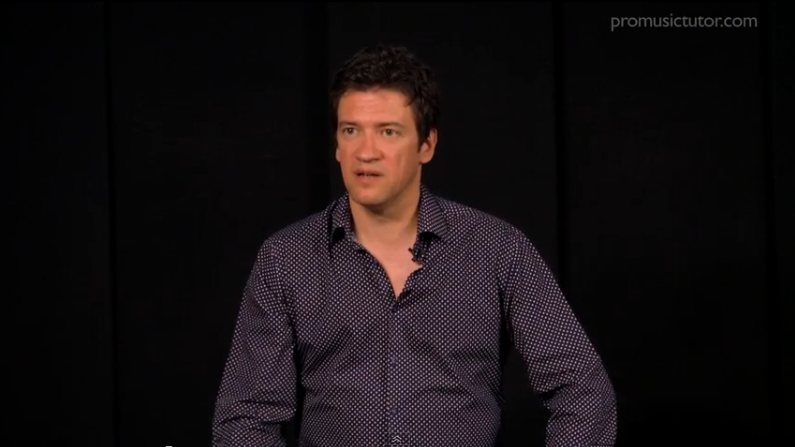One of the first things any aspiring guitarist needs to learn is how to strum their instrument.
Before You Begin
Your guitar needs to be strung and tuned correctly. To achieve this, either buy a tuner from the music store, or download an app to help you.

Getting Started With Strumming
Strumming a guitar is about rhythm and consistency. Before you pick up the guitar, simply practice the playing action and movements of your arm and wrist. If you struggle to pick this up, go out and buy a metronome to help you with the timing, or download a free metronome app.
Once you are happy with the timing and your technique, it is time to get the guitar in your hand and start practicing for real.
Take some time to get used to the rhythm again. More importantly, you need to ensure that the way you play guitar means you play each string evenly when you strum. If you hit the top string and then feebly strum over the others, you will get an uneven sound. Aim should be for a strong sound at all times.
Although different songs and styles of music call for a variety of strumming styles, we suggest you start with a full downstroke followed by an upstroke at the same velocity and volume.
Moving On
As you get used to strumming your guitar and have the rhythm down to a tee, start practicing the upstroke without actually playing any sound. A subtle movement of the wrist and fingers is usually enough to master it.
Introducing Chords
The best approach is to start with something relatively easy that utilizes a natural finger position on the fret board, such as G major.
Go back to when you first introduced the guitar into this practice, and do the same thing again, continuously playing up and down at a continuous rhythm. Start by playing the downstrokes only, getting quicker and quicker until you are confidently playing at a steady rhythm.
Introduce another chord and start moving around the fret board. C major is a good chord to use, and is easy to get to from G major.
As soon as you are familiar with both chords, begin to alternate between the two.
Building Your Confidence
If you have mastered the metronome-like rhythm in your playing hand, then moving from one chord to the next mid note should start to come naturally to you. However, doing it at speed is difficult, so as with the standard strumming, it is best to start slowly and gradually build up to the pace you want to play at.
Advanced Strumming
Eventually you will start to introduce more chords and perhaps even start picking individual strings as you strum. This is a more advanced style of guitar playing, so do not be annoyed with yourself if you struggle to pick it up right away.
As you get started with strumming, it is worth remembering that music is an art, and it will take time to master.
Image Source: K Thuggg





